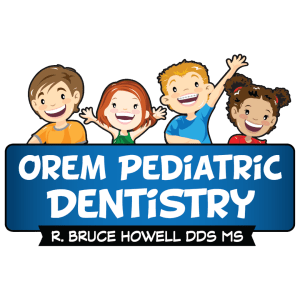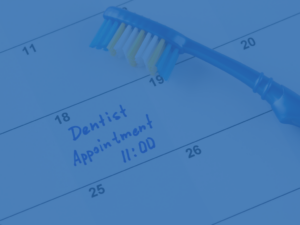Over the years, I’ve had the privilege of helping countless families maintain strong, healthy smiles for their little ones. For those that do not know me, I’m Dr. R. Bruce Howell, a pediatric dentist at Orem Pediatric Dentistry in Orem, Utah.
As someone who’s passionate about children’s oral health, I can’t stress enough how crucial preventative dental care is. It’s not just about fixing problems when they arise—it’s about stopping them before they start. In this article, I’ll share some of my experience on what we’ve done over the years to help kids and parents understand and implement preventative dental care at home.
I will cover why prevention matters, practical tips for home care, professional treatments we offer, and ways to make dental visits enjoyable. Keep in mind that this is all aimed at improving healthy habits and making care more routine and “normal”.
The Importance of Preventative Dental Care
Preventative dental care is the foundation of lifelong oral health, especially for children whose smiles are still developing. As I often tell parents at our clinic, an ounce of prevention truly is worth a pound of cure.
At Orem Pediatric Dentistry, we’re committed to being your resource for preventive care, helping families in Utah enjoy beautiful, healthy smiles for years to come. To accomplish this, we focus on education, with prevention being our main focus. It’s often overlooked, but many common issues like tooth decay and cavities are largely avoidable with simple, consistent care. But why?
Well, children’s teeth are particularly vulnerable because their enamel doesn’t fully harden until adolescence. Unfortunately, by then, most kids have already experienced some form of decay. For example, nearly half of children aged 6–11 in the U.S. are affected by tooth decay. Research shows that about 20% of children aged 5 to 11 years have at least one untreated decayed tooth. These numbers are concerning, but the good news is that with proper preventative measures, we can significantly reduce these risks.
In my practice, I emphasize that preventative care combines home routines with professional interventions. It starts with education—teaching parents and kids about the why and how of oral hygiene. Benefits include not just fewer cavities, but also better overall health, as poor oral hygiene can lead to issues like gum disease or even affect systemic health. Regular preventive practices can decrease cavities in children by up to 95% when combined with treatments like sealants and fluoride. It’s rewarding to see families adopt these habits and watch their children’s confidence grow with bright smiles.
The key to success is starting early. The American Academy of Pediatric Dentistry recommends the first dental visit by age one or when the first tooth appears. This sets the stage for monitoring development and catching potential issues early. In our Utah Valley community, where families are active and on the go, making time for prevention pays off in avoiding costly treatments later.
Home Care Routines: Building Habits for Life
I know how challenging it can be to instill good habits in children, but when it comes to oral hygiene, consistency is key. At home, the foundation of preventative dental care lies in daily routines that parents can guide and supervise.
First and foremost, brushing twice a day for two minutes is essential. I recommend using fluoride toothpaste and a soft-bristled brush with a small head, perfect for little mouths. Children often lack the dexterity to brush effectively until they can tie their own shoes—around age 7 or 8—so parental help is crucial. Supervise to ensure they’re covering all surfaces: front, back, and chewing areas.
Flossing should begin as soon as two teeth touch, usually around age 2 or 3. It removes plaque from between teeth and under the gumline, where brushes can’t reach. Make it fun by using flavored floss picks or turning it into a game. I often suggest parents demonstrate on themselves first, then assist the child.
Diet plays a huge role too. Limit sugary snacks and beverages, as they fuel bacteria that cause decay. Encourage water, fruits, veggies, and dairy for strong teeth. A balanced diet supports enamel health and reduces cavity risk.
To teach these habits effectively, I’ve found creative methods work wonders. For example, use science experiments like the “egg enamel demo,” where you soak a hard-boiled egg in soda to show acid erosion, or mix yeast and sugar to simulate “sugar bugs.” Play games, watch educational videos, or let kids pick their toothbrush to build excitement. In my clinic, we provide resources like coloring pages of teeth to make learning interactive.
Remember, these routines aren’t just about teeth—they teach responsibility and self-care. Starting young can prevent up to 50% of caries in primary teeth, according to health data. As kids grow, reinforce with positive reinforcement, like sticker charts for consistent brushing.
Professional Treatments in Preventative Dental Care
While home care is vital, professional interventions at Orem Pediatric Dentistry elevate prevention to the next level. We offer a range of treatments tailored for children’s developing smiles.
Routine check-ups every six months allow us to monitor oral health, clean teeth thoroughly, and apply fluoride treatments. Fluoride strengthens enamel, making it more resistant to acid attacks. In pediatric dentistry, we use varnish applications, which are quick and effective. Studies show fluoride therapy reduces caries prevalence in children significantly. We apply it every 3 to 6 months for high-risk kids, and it’s safe with minimal side effects.
Another cornerstone is dental sealants, which I’ll dive into more later, but they’re part of our preventive arsenal. We also provide nutritional counseling and habit guidance, like addressing thumb-sucking that can affect tooth alignment.
Early detection during these visits can catch issues before they worsen. For example, we screen for orthodontic needs or enamel weaknesses. In my experience, families who commit to regular visits see fewer emergencies and healthier outcomes. Preventive care here isn’t just clinical—it’s about building trust and educating parents on spotting signs like white spots on teeth, which could indicate early decay.
We’re open until 7pm on Wednesdays and every third Saturday, making it easier for busy Utah families to schedule. Bringing your child regularly ensures the best oral care and a positive experience.
Dental Sealants: A Shield Against Decay
One of the most effective tools in preventative dental care is dental sealants, and I’m passionate about offering them at Orem Pediatric Dentistry. Sealants are thin, protective coatings applied to the chewing surfaces of molars and premolars, where food particles often get trapped in grooves.
Children’s molars are prone to decay because bacteria thrive in those pits and fissures. Sealants create a barrier, sealing out plaque and acids that lead to cavities. The process is painless and quick: we clean the tooth, apply the sealant with a brush, and it hardens in minutes—no recovery needed. With proper care, they can last several years.
The benefits are profound. Sealants reduce cavity risk by up to 80% in the first two years and continue protecting throughout childhood. They’re especially useful for kids, as newly erupted permanent teeth are most susceptible and least benefited by fluoride alone. In fact, they’re a preventive powerhouse, helping avoid fillings and more invasive treatments.
Some parents worry about safety, but sealants are non-toxic and BPA-free in modern formulations. They’re not a substitute for brushing but complement it beautifully. I recommend them around age 6 when first molars erupt, and again for second molars around 12.
In our clinic, we’ve seen sealants transform smiles, preventing decay in vulnerable areas. Combined with fluoride, they offer comprehensive protection, aligning with our goal of issue-free childhoods.
Making Visits More Fun
Finally, preventative dental care isn’t complete without addressing the emotional side—helping children love the dentist. Fear or anxiety can deter regular visits, so at Orem Pediatric Dentistry, we focus on positive experiences and a warm, caring environment.
Start by bringing kids early to familiarize them with the environment. Our office is kid-friendly, with games and rewards. I encourage parents to use positive language: “The dentist will count your teeth and make them shiny!”
Role-playing at home or reading books about dental visits can prepare them. During appointments, we explain everything in simple terms, letting kids hold tools to reduce mystery.
Building habits like this fosters lifelong appreciation for oral health. Kids who enjoy visits are more likely to maintain routines, leading to fewer issues. In Utah Valley, where community matters, we’re here to make dentistry a joy.
For us, preventative dental care is a partnership between home, professionals, and education. By following these tips, you can safeguard your child’s smile. If you’re in Orem, schedule a visit with us today—let’s keep those smiles healthy together!






